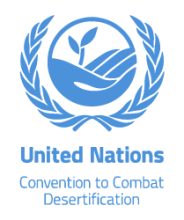Resource information
The second phase of the Sustainable Management of Marginal Drylands (SUMAMAD-2) project began in 2009 following a preparatory meeting on the project held on 3–6 June 2008 in Amman and the Dana Biosphere Reserve, Jordan, and was hosted by the Royal Society for the Conservation of Nature (RSCN). The extended SUMAMAD-2 to other world regions included South America (Bolivia) and Africa (Burkina Faso). This geographic range allows to share dryland management experience and expertise among researchers in Africa, Arab States, Asia, Europe and Latin America.The objectives of SUMAMAD-2 now focus on the following themes:
Fostering scientific drylands research
• Improvement of dryland agriculture (crop and livestock production) through the sustainable use of natural
resources, focusing on sustainable water conservation and harvesting practices.
• Restoration and rehabilitation of degraded drylands, focusing on biodiversity conservation and the sustainable use of natural biotic resources.
Preparation of policy-relevant guidelines for decision-makers in drylands
• Developing scenarios for land-use changes (also in the context of climate change), including the assessment of trade-offs and the economic valuation of dryland services.
• Interfacing with relevant policy-formulation institutions and processes in the respective countries.
Promoting sustainable livelihoods in drylands
• Encouraging alternative income-generating activities and the diversification of economic options, such
as ecotourism, handicraft production, forage, medicinals and dietary diversification, in order to reduce
dependencies on traditional dryland agriculture.
A cross-cutting objective is to strengthen capacity-building in all study sites through training schemes on environmental research and conservation, study visits among field project partners, and environmental education in formal and nonformal contexts (such as using the UNESCO Teaching Resource Kit for Dryland Countries).



